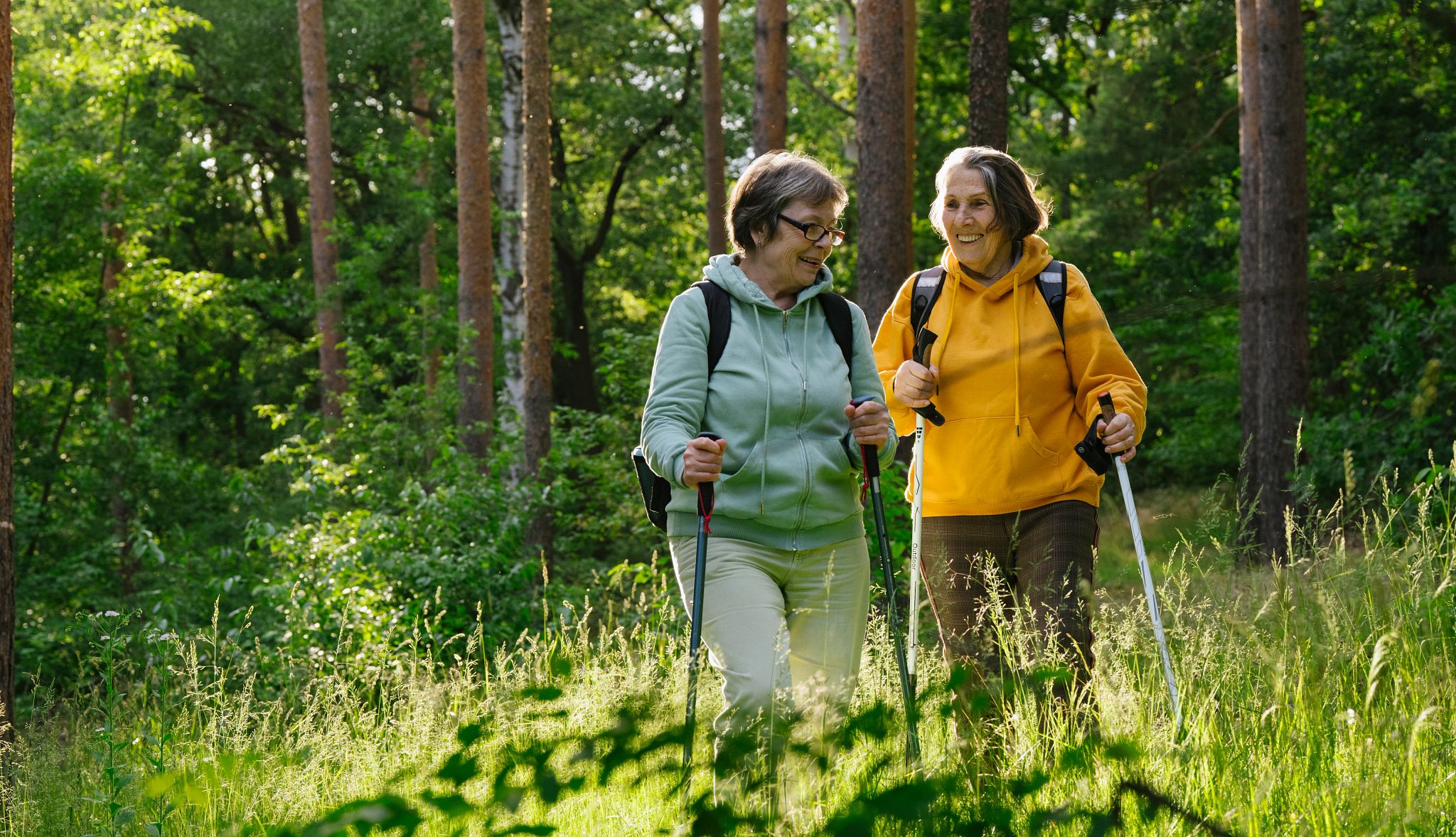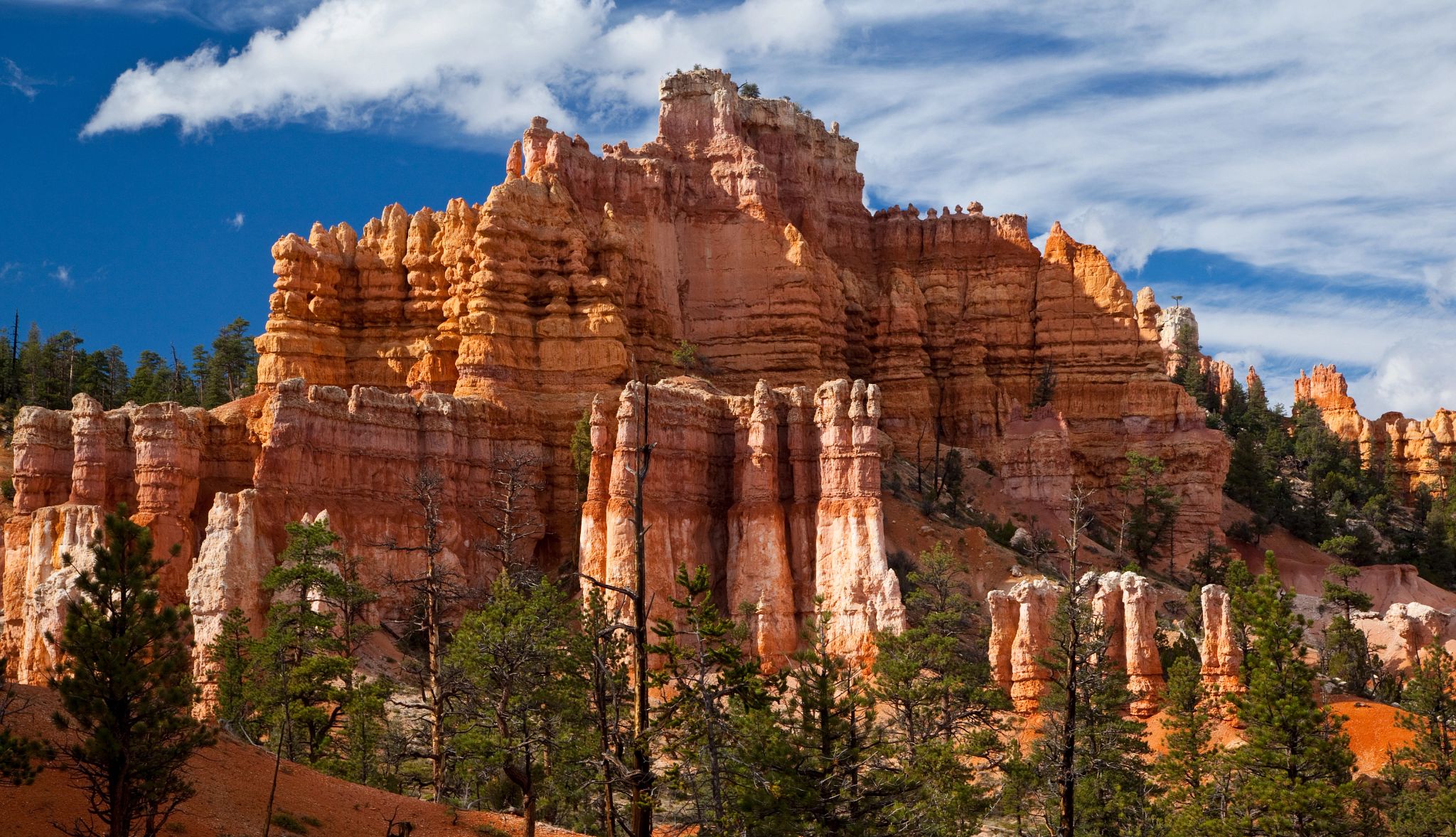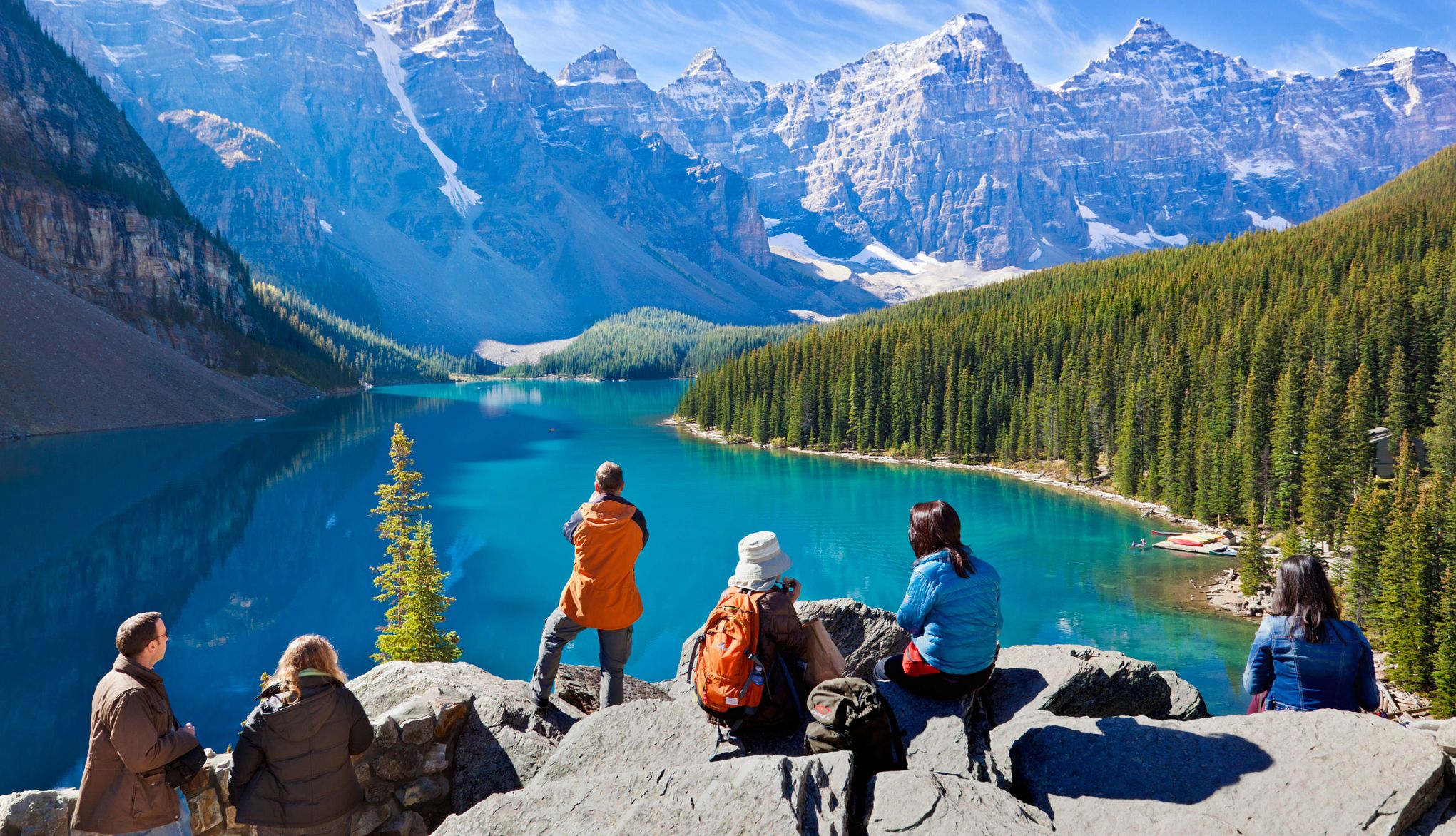AARP Hearing Center
In this story
Get Ready to Get Moving | Plan Your Hike | Get Moving | The Hiking Lifestyle | Keep Learning
“Take a hike” isn’t the insult you think it is. It is an invitation to enjoy the benefits of walking in the great outdoors — of which there are many, according to researchers. Hiking can improve physical health, thanks to the exercise you get on trails, as well as mental and emotional health, thanks to the time spent in nature.
A 2024 study in the Journal of Aging and Physical Activity suggests that the benefits are especially pronounced for older adults. During the study, adults ages 55 to 75 participated in an eight-week hiking program. At the end of it, researchers found that participants “significantly improved” their cardiorespiratory fitness. In a separate analysis published in the journal Wellbeing, Space and Society, the same research group examined the eight-week hiking program’s impact on inactive older adults. For that cohort, hiking was “overwhelmingly positive and satisfying,” the researchers noted, adding that participants also reported being in better physical and mental condition. And because it was a group setting, hiking had social benefits as well, the researchers noted.
Hiking isn’t just super healthy, though. It’s also extremely accessible. There are hiking trails in both urban and rural settings. There are trails you can only access by purchasing a state or national park pass, and free trails that are open to all. There are steep and rugged trails for advanced hikers, and flat, paved trails that wheelchair users can enjoy.
While hiking is simple in principle, doing it safely and successfully requires a little preparation. This AARP Smart Guide can help.
GET READY TO GET MOVING


1. Talk to your doctor
What’s true of any physical activity is also true of hiking: Before you try it, check with your doctor. “Hiking is an excellent way for older adults to stay in shape and enjoy the beauty of the outdoors. To make sure this is done safely, it’s a good idea to discuss a few major points with a primary care doctor,” says emergency medicine physician Cheyenne Falat, assistant medical director of the Adult Emergency Department at the University of Maryland Medical Center. In particular, she recommends asking about your cardiovascular health and musculoskeletal preparedness.
Consider these questions: Are my heart and lungs healthy enough? Are my muscles and joints strong enough? Do I require any special accommodations or considerations, given the medications I’m taking? Your doctor may want you to take a cardiac stress test to make sure your heart is up to the challenge of hiking, or a balance assessment to determine your fall risk.
2. Prime your muscles
If your doctor gives you the green light to hike, consider starting an exercise routine before you hit the trails, suggests John A. Mercer, a professor of kinesiology and nutrition sciences at the University of Nevada, Las Vegas.
“Treat hiking like any new exercise — you need to ease into it,” Mercer says. “Even someone who regularly runs two to three miles a few times a week may be challenged by hiking five miles. The reason is that hiking can use muscles differently than … regular walking or running.” That can lead to muscle soreness or injury, the risk of which can be dramatically reduced with strength training two to three times per week, says personal trainer, nutritionist and yoga teacher Terry Tateossian, founder of THOR: The House of Rose, a wellness community for women over 40. She recommends focusing on lower-body muscles like glutes, hamstrings and calves to support climbing and stability; doing core work for balance and back support; and building upper-body strength if you’ll be carrying a backpack. Top exercises include squats, step-ups, lunges, glute bridges and hip thrusts.
3. Build endurance and balance
Strength training is great, but endurance and balance also should be priorities, says physical therapist W. Zach Smith, founder and owner of HIDEF Physical Therapy, in Seattle. “Working on endurance can help you avoid fatigue-related injuries or falls,” says Smith, who recommends stair-climbing or walking on a treadmill at an incline. For balance — crucial to avoiding falls — try balancing on one leg while turning your head from side to side, or passing a weight back and forth between your hands, Smith suggests. “You can work up to more uneven surfaces in order to improve the ankle and foot’s ability to maintain balance when stepping on something unsteady. I also like to try and balance on hard surfaces that are slanted.”
4. Warm up
Regular workouts can prepare your body for hiking over the course of weeks and months, but even the fittest hikers can get hurt if they forget to warm up before they hit the trails. “Dynamic stretches are the best warm-up before a hike,” says physical therapist, hiking trainer and certified nutrition coach Alicia Filley, founder of The Healthy Hiker Training Program. “These are stretches that use movement and the contraction of one muscle to stretch the opposing muscle. For instance, when you bend your knee and kick your heels back toward your bottom, you stretch the muscles on the front of your thigh.”
Dynamic stretching increases blood flow and raises your heart rate, according to Filley, whose favorite stretches include elbow-to-knee marches (raise one knee in a march and reach the opposite elbow to that knee); windmills (spread your legs and arms, then reach down with one hand toward the opposite foot); hip swings (stand on one leg and swing the opposite leg forward and back, then side to side); butt kickers (bend your knee and bring your heel toward your butt); and toe sweeps (take a small step forward and pull the toes of the forward foot up, then reach toward your toes and “sweep” the sides of the foot with both hands as if cleaning dirt from your shoe).
5. Try yoga
Yoga can also be a good primer for hiking, says yoga instructor Dalton Grant, founder of online yoga studio The Light Orchard in California. “Many people think yoga helps prepare the body for a hike due to its focus on flexibility, but yoga’s real pre-hike benefit is its focus on mobility,” Grant says. “Mobility is more important than flexibility when prepping for a hike because mobility involves controlled movement through a joint’s full range of motion, which is key for navigating uneven terrain and climbing inclines.”
According to Grant, a great pre-hike ritual is to walk around the trailhead parking lot for five minutes, then do some gentle dynamic movements like bootstraps, where you do a squat and then fold forward through your legs, keeping your feet wide and slightly turned out. You then repeat this squat-to-fold five to 10 times. A favorite pre-hike yoga pose is “anjaneyasana,” or “low lunge pose.” “It opens and lubricates the hip creases, engaging the psoas and quadriceps, which helps you prepare for walking uphill,” Grant explains.
6. Grab — or borrow — your gear
Your body isn’t the only thing you need to prepare before you start hiking. You also need to prepare your backpack, according to Filley, who says hikers should always carry these 10 essential items to survive a night in the wilderness in case they get lost or injured.
- Water: Carry more than you think you’ll need.
- Food: Be sure to have extra snacks beyond what you need for your trek.
- First aid: A well-stocked first aid kit is ideal, but you should at least carry the essentials for handling the most common minor issues, such as cuts, scrapes and blisters.
- Sun protection: A hat and sunscreen are important to prevent sunburn, which can contribute to dehydration.
- Navigation: Maps and a compass are essential, along with any digital navigation sources you might use.
- Light source: Headlamps are ideal for navigating a trail in the dark, but you can also carry a flashlight or an emergency light stick.
- Fire: Waterproof matches are important for starting a fire for warmth, light and emergency signaling.
- Warm layers: Temperatures can change drastically and unexpectedly, so always carry an extra layer of clothing, like a fleece or puffy jacket.
- Knife: A multi-tool knife is essential for building an emergency shelter or making equipment repairs.
- Emergency shelter: This can be an emergency bevy or tarp to help you stay warm and dry if you’re stranded.
7. Purchase poles
Another essential item, especially for older adults, is a pair of trekking poles, says well-being coach and walking guide Lea Appleton, author of Walking & Wayfinding: Create Your Own Mindful Practice, One Step at a Time . “Especially for those of us who may have some challenges with mobility or balance, trekking poles are top of the list,” says Appleton, who at age 59 has an artificial hip.
“There are so many different types of poles that each person will probably have their favorites. I own both a fold-up carbon set and an adjustable aluminum set of poles, and I don’t really have a preference since I love them both. You pick (poles) for the type of terrain you’ll need.”
James Ian, founder of Parks Collecting, a website offering guides and itineraries for U.S. national parks — echoes the importance of trekking poles. “They will save your thighs going up and knees going down, and help stabilize you even on flat ground,” he says.
8. Find your footwear
Yet another important pre-hike purchase is hiking shoes, says physical therapist and exercise physiologist Milica McDowell, vice president of operations at Gait Happens, a company that specializes in foot-health education. “Don’t hike in a walking or running shoe,” McDowell advises. “Hiking shoes and boots are designed with specific features like grippy soles to help provide traction, and flexible uppers — the part where your laces are — to allow you to adjust your body to uneven terrain, up- or downhill challenges or even … slanted terrain.”
And resist the urge to buy highly cushioned shoes geared more toward walking and running. “When you wear a shoe with excessive cushion, you are diminishing your ability to feel the ground, and when you are walking or hiking on more advanced terrain, it’s imperative that you can feel what you are walking on,” continues McDowell, who says hyper-cushioned shoes can increase the risk of falling during a hike. Overly stiff shoes aren’t good, either. “If you cannot hold the shoe and twist it like a wet kitchen towel, your shoe is very stiff and won’t adapt to the contours of hiking terrain,” McDowell notes.
9. Don’t forget important meds
If you take medication for a chronic health condition, remember to pack it alongside other hiking essentials. “Older persons who need daily meds, or those who use episodic meds like inhalers, blood sugar monitors, insulin or EpiPens, should always carry these,” Filley says. “Keep an extra day’s supply of daily meds in your pack so that should your adventure take a turn, you’ll have what you need to maintain your health.” Depending on your regimen, a medication cooler might be necessary, Appleton says.
10. Pack smart
It’s not just what you pack that matters, but also how. “Keep your pack light and organized,” advises Rue Mapp, founder and CEO of Outdoor Afro, a not-for-profit that helps African Americans reconnect with nature. It’s important to keep the weight and size of your pack in mind when you’re deciding what to bring, Appleton echoes.








































































